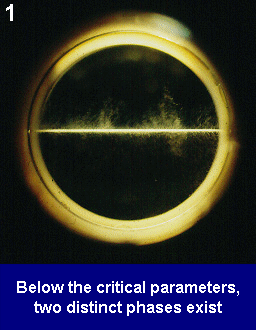The Propulsion Futures Beacon
For more details, see the Beacon web site.
Mixtures involving water or carbon dioxide
Carbon dioxide capture, transport and storage are vital to reducing the greenhouse gas content of the atmosphere. We are planning to use new theoretical and computational techniques to discover important properties such as the phase behaviour, density, critical point and maximum water content of a range of carbon dioxide mixtures at different pressures and temperatures.
Our research on water mixtures involves the calculation of thermodynamic properties for mixtures of atmospheric gases and combustion gases.
Virial coefficients
The thermodynamic properties of low-pressure gases can be related to the virial coefficients, which themselves can be deduced from a knowledge of the forces between the molecules. We also calculate high-order virial coefficients, equations of state and correlation functions for simple model interactions, such as hard spheres and hard discs, steeply repulsive potentials, square-well potentials, and ellipsoidal molecules. The calculations of high-order coefficients use my recently-developed and highly efficient algorithm.
Van der Waals forces
Weak Van der Waals forces between molecules arise from a combination of electrostatic, induction, dispersion and electron exchange effects. For non-polar, closed-shell molecules, the dispersion attraction and exchange repulsion dominate. For hydrogen-bonded complexes, the electrostatic and induction forces are also important.
The goal is the calculation of an intermolecular potential energy surface, which describes the interaction between the molecules of interest. The intermolecular potential is a multidimensional function which must be calculated at hundreds or thousands of different points corresponding to different relative positions of the molecules.
Direct calculations using quantum chemistry computer programs are not usually suitable for this, because they take too long, and are inaccurate, especially when calculating the dispersion energy. My group uses a variety of methods to overcome this.
Computational studies of supercritical fluids.
Supercritical carbon dioxide is one of the chemical solvents of the future. It is environmentally friendly, cheap and easy to produce, and its physical properties can be changed substantially with small changes in temperature and pressure, leading to control over chemical reaction products.

We are interested in the unexpectedly large solubility of fluorinated hydrocarbons in supercritical carbon dioxide. These molecules dissolve in carbon dioxide much better than water does, so understanding this phenomenon may lead to the design of new surfactants for stabilising water-containing micelles within the carbon dioxide solvent.


